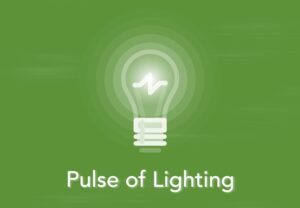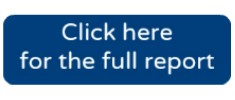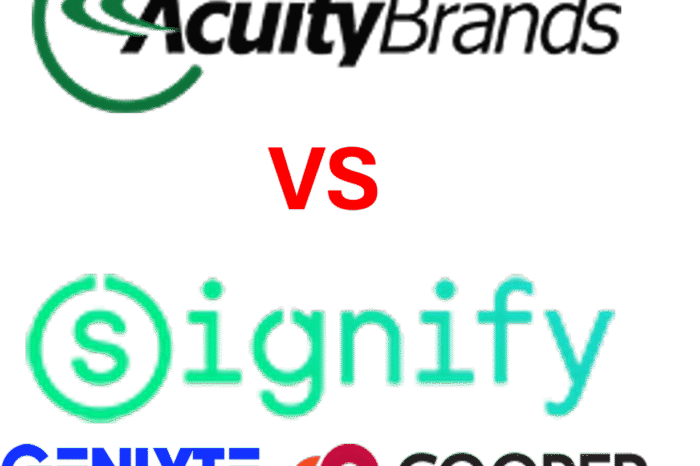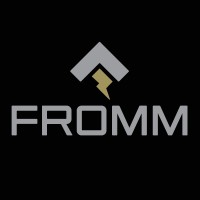Acuity Reports, Lighting Results Compare to Q3 Pulse of Lighting Market
Earlier this week we released the results of our Q3 Pulse of Lighting survey (and click here if you want to order a copy of the report) and Acuity shared their FY Q4 results (which was CY Q3).
Bottom line … while it was a hot summer, it wasn’t hot for the lighting market.
 Acuity Reports
Acuity Reports
Let’s first take a look at highlights from Acuity’s earnings call:
- “Grew” net sales in lighting, as well had margin expansion.
- Although, net sales, for lighting, increased by $11 million! (but it grew!)
- Sales were $955M, up from $944M
- Growth was up 1.1%
- The increase was “driven by improvements in the majority of our channels but was primarily the result of higher net sales in our corporate accounts channel
- Shared a number of new product launches, including Holophane’s Holobay.
- Mentioned that they entered a “new” vertical, for them, which is the refueling market (where Cree Lighting has been strong, so …) and expanded their offering in the horticulture space (and you may remember that we highlighted this as a potential niche growth market for distributors in this article.)
- Acuity growth strategy:
- As largest lighting company in North America, grow with the market.
- Take share
- Invest for growth by entering new verticals Acuity historically has not been in or where they are underpenetrated.
- 2025
- Expect ABL (lighting) to “deliver low to mid-single digit sales growth with it anticipated to be more back-half weighted (so, spring / summer for Acuity.)
- Although, net sales, for lighting, increased by $11 million! (but it grew!)
Input from Analyst Questions
- According to Neil Ashe, “we are reasonably confident about fiscal year ’25.” (Which is to be expected as industry forecasts, including DISC, projecting low single digits. Interest rates may benefit for later in the year, so no surprise on Acuity’s lighting forecast … essentially, market growth. The only difference is if they, internally, believe that the lighting market would lag the electrical industry forecast.)
- Company has strong cashflow and “healthy M&A pipeline.” Looking at small to medium-sized acquisitions to grow both businesses but the priority is the ISG (Spaces) business and possibly more “data-oriented” businesses.
- Mention of their strategic pricing strategy that enables them to be aggressive for selected opportunities while “continuing to earn higher margins.”
- Acuity lighting agent overview
- About, “round numbers,” 60% of lighting business
- About 80 agencies with about 50 FTEs, on average
- Performance of the agency network has been “consistent.”
- Projects are slow to release

The Pulse is Barely Beating
Our Q3 Pulse of Lighting report had a little more than 200 respondents with about one-third coming from each element of the channel.
Overall
- Each element forecasted that Q3 had minimal, if any, growth. Compared to the Acuity lighting results, they slightly underperformed the feedback we received from distributors and manufacturers, but by a whisper.
- Price degraded a little more than Q2, but minimal overall. This is in aggregate as, for any given major order, price discounting can be aggressive according to respondents. And 75% do not expect price increases in Q4.
- The large project market, whether new or renovation, is very slow in most markets. There is activity in the small to mid-sized market with more towards the renovation segment. Some key market segments, and it changes by geography, were education, healthcare, multi-family, IIJA-funded initiatives and, in some instances, commercial projects driven by return-to-work initiatives.
- Distributors are comfortable with their inventory and are not seeking to add lighting to their inventory.
- Almost half of distributors reported backlog being up. Some report that this is from holding projects for customers, some is due to switchgear delays. Similarly, almost half of manufacturers reported backlogs are up. This could be a combination of sales activity as well as holding for projects that are delayed.
- Q4 outlook is for, essentially, more of the same, perhaps a slight uptick due to finishing end of year projects as well as utility-rebate enhanced opportunities although reps / lighting agents feel that there could be a decline. This could be due to lack of end-of-year project inventory build to meet rebate goals.
- All audiences shared that they are winning projects based up VEing them and that this is increasing, especially with more contractors doing design / build. They also shared that project approvals … whether it quote approval or submittals being approved – are taking longer than ever and hence delaying order finalization and hence delivery.
- When manufacturers and reps were asked about specifier outlook, they shared that more are expressing concern or expecting a slowdown, looking out over the next 6 months. Whether this is a significant or modest decline, the fact is that there is not much optimism in the market at this time, even with the Fed’s recent ½ point rate reduction and projection for another ½ point by the end of the year.
With this report we also asked respondents a couple of questions regarding lighting controls and future market growth. The questions were:
- What percentage of your lighting business does lighting controls represent?
- What do you think the challenges are to growing lighting control sales?
- What do you think could drive lighting demand or is the lighting industry a market share game?
Aggregated insights to identify trends as well as verbatim responses were included in the report.
 Survey respondents were provided the opportunity to receive the report for free. The complete report is available for only $35.
Survey respondents were provided the opportunity to receive the report for free. The complete report is available for only $35.
Take Aways
The lighting market is essentially flat / nominal growth, which, anecdotally, is lagging the overall lighting market which is being powered by the industrial market as well as selected segments (i.e., data centers) with the residential and most of the commercial construction market “challenged.”
Acuity is doing well in retaining its business and, more importantly, improving its profitability. Their results also highlight the potential / power of strategic pricing (or selective pricing!)























